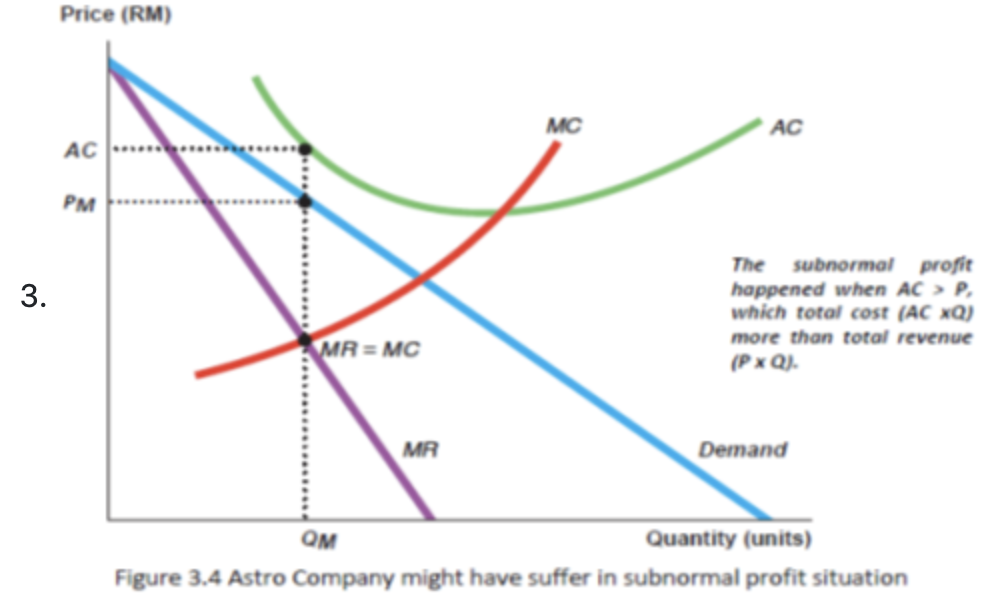3.4.3- Monopolistic competition
1/6
There's no tags or description
Looks like no tags are added yet.
Name | Mastery | Learn | Test | Matching | Spaced |
|---|
No study sessions yet.
7 Terms
characteristics of monopolistically competitive markets
large number of buyers and sellers
no barriers, or very low barriers, to entry or exit
differentiated, non-homogenous goods- so some price setting power and downward sloping demand curve
what happens in monopolistically competitive markets in the short term
can make supernomal, subnormal or normal profit
what happens in monopolistically competitive markets in the long run
only normal profit, as low/no barriers to entry and/or exit
explanation and diagrammatic analysis of what happens in a monopolistically competitive market that is making supernormal profit
in the short run the firm is making supernormal profit as AR exceeds AC at the profit maximising level of output
however, due their being low barriers to entry firms will be incentivised to join the market due to supernormal profits being earned, this will reduce the demand for the individual firm, represented by a shift inwards of the AR and MR curve to meet the AC curve
therefore, in the long run AC=AR so normal profit is made

explanation and diagrammatic analysis of what happens in a monopolistically competitive market that is making subnormal profit
in the short run the firm is making subnormal profit as AC exceeds AR at the profit maximising level of output
however, due their being low barriers to entry firms will be incentivised to leave the market due to subnormal profits being earned, this will increase the demand for the individual firm, represented by a shift outwards of the AR and MR curve to meet the AC curve
therefore, in the long run AC=AR so normal profit is made

limitations of monopolistic competition price equilbirium model
the information firms have may be imperfect so firms may not accurately respond to change in profit levels in the market
additionally due to firms differing in size and products sold, some firms may be able to maintain supernormal profits in the long run
efficiency of monopolistic competition
Since they can only make normal profit in the long run, AC=AR and since they profit maximise, MR=MC. Therefore, the firm will not be allocatively or productively efficient, as MR does not equal AR so AC cannot equal MC and AC cannot equal MR.
They are likely to be dynamically efficient since there are differentiated products and so know that innovative products will give them an edge over their competitors and enable them to make supernormal profits in the short run. However, since the firms are small they may struggle to receive finance or have the retained profits necessary to invest.
In monopolistic competition compared to perfect competition, less is sold at a higher price and firms may not necessarily be producing at the lowest cost. However, the market will offer greater variety and may be able to enjoy some degree of economies of scale.